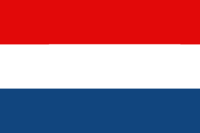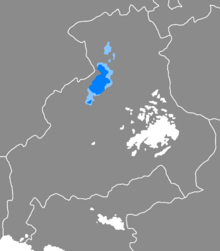Bogmian language: Difference between revisions
m (→Alphabet) |
mNo edit summary |
||
| Line 17: | Line 17: | ||
| region = [[Kento-Poylash languages|Slavic Belt]] in [[Thuadia]] | | region = [[Kento-Poylash languages|Slavic Belt]] in [[Thuadia]] | ||
| ethnicity = Pustogorian Bogmians | | ethnicity = Pustogorian Bogmians | ||
| speakers = [https://en.wikipedia.org/wiki/First_language L1]: 75,820 | | extinct = 1912 – 1940 in [[Bogmia]]<ref>Bogmian language in [[Bogmia]] developed into the [[Zhoushi language]] via the merger with Slavic Zhengian language, although some dialects are still linguistically close to the pure Bogmian spoken in the Tlhenget Mountain Range</ref> | ||
---- | |||
Still alive in Tlhenget: | |||
| speakers = | |||
| speakers2 = [https://en.wikipedia.org/wiki/First_language L1]: 75,820<br>[https://en.wikipedia.org/wiki/Second_language L2]: 12,500<br>[https://en.wikipedia.org/wiki/Foreign_language FL]: 45,000 | |||
| familycolor = Indo-European | | familycolor = Indo-European | ||
| fam1 = [[Thuado-Thrismaran languages|Thuado-Thrismaran]] | | fam1 = [[Thuado-Thrismaran languages|Thuado-Thrismaran]] | ||
Revision as of 10:07, 13 June 2021
This article is incomplete because it is pending further input from participants, or it is a work-in-progress by one author. Please comment on this article's talk page to share your input, comments and questions. Note: To contribute to this article, you may need to seek help from the author(s) of this page. |
| Bogmian | |
|---|---|
| Bogmijština | |
 Flag of the former Kingdom of Bogmia | |
| Pronunciation | /boɡmijʃcina/ |
| Region | Slavic Belt in Thuadia |
| Ethnicity | Pustogorian Bogmians |
| Extinct | 1912 – 1940 in Bogmia[1]
Still alive in Tlhenget: L1: 75,820 L2: 12,500 FL: 45,000 |
Thuado-Thrismaran
| |
| Official status | |
Recognised minority language in |
|
| Language codes | |
| ISO 639-1 | BG |
| ISO 639-2 | PBG |
| ISO 639-3 | PBG |
 Distribution of the language
Absolute majority >30% of native speakers | |
The Pustogorian Bogmian language (Bogmian: Pustogorská Bogmijština), or simply referred to as Bogmian language (Bogmian: Bogmijština), is a language spoken in the Puste Gory (Mokhavian: Tlhenget, Common: Barren Mountains) area of the Nohchat Province of Qazhshava, which developed in a Bogmian community which fled Bogmia shortly after the Empire of Three Kings was formed.
History
The Bogmian language was the slavic language spoken in Bogmia, but after the integration with the Slavic Zhengian, it developed into the present day form of the Zhoushi language.
Alphabet
Although originally using the Protopolyashi script, Bogmian language in exile later developed an alphabet on its own. In an act of defiance, the Bogmians in exile developed a diacritic alphabet, which is in a strong contrast to the Zhoushi grapheme script. This alphabet uses four digraphs (dj, dz, dž and tj) and three diacritic markers: caron for softening (Č, Ě, Ľ, Ň, Ř, Š and Ž), circumflex for phonetic shifts (Ĥ and Ô) and accute for vowel lenghtening)
| A a | Á á | B b | C c | Č č | D d | Dj dj | Dz dz | Dž dž | E e |
| É é | Ě ě | F f | G g | H h | Ĥ ĥ | I i | Í í | J j | K k |
| L l | Ľ ľ | M m | N n | Ň ň | O o | Ó ó | Ô ô | P p | Q q |
| R r | Ř ř | S s | Š š | T t | Tj tj | U u | Ú ú | V v | Ƿ ƿ |
| X x | Y y | Ý ý | Z z | Ž ž |
| Order | 1 | 2 | 3 | 4 | 5 | 6 | 7 | 8 | 9 | 10 | 11 | 12 | 13 | 14 | 15 | — | 16 | 17 | 18 | 19 | 20 | 21 | 22 |
|---|---|---|---|---|---|---|---|---|---|---|---|---|---|---|---|---|---|---|---|---|---|---|---|
| Majuscule | A | Á | B | C | Č | D | Dj | Dz | Dž | E | É | Ě | F | G | H | Ĥ | I | Í | J | K | L | Ľ | M |
| Minuscule | a | á | b | c | č | d | dj | dz | dž | e | é | ě | f | g | h | ĥ | i | í | j | k | l | ľ | m |
| IPA Sound | a | aː | b | t͡s | t͡ʃ | d | ɟ | d͡z | d͡ʒ | ɛ | ɛː | ʲe | f | g | x | ɦ | i | iː | j | k | l | ʎ | m |
| Order | 23 | 24 | 25 | 26 | 27 | 28 | 29 | 30 | 31 | 32 | 33 | 34 | 35 | 36 | 37 | 38 | 39 | 40 | 41 | 42 | 43 | 44 | |
| Majuscule | N | Ň | O | Ó | Ô | P | Q | R | Ř | S | Š | T | Tj | U | Ú | V | Ƿ | X | Y | Ý | Z | Ž | |
| Minuscule | n | ň | o | ó | ô | p | q | r | ř | s | š | t | tj | u | ú | v | ƿ | x | y | ý | z | ž | |
| IPA Sound | n | ɲ | ɔ | ɔː | u͡o | p | k͡v | r | r̝ | s | ʃ | t | c | u | uː | v | w | k͡s | ɨ | ɨː | z | ʒ |
The letter Ĥ was later introduced to distinguish the sound of /ɦ/ from foreign words from the sound /x/. Example of the usage may be the word ĥistorie (history), which is read as /ɦɪstorijɛ/.
- ↑ Bogmian language in Bogmia developed into the Zhoushi language via the merger with Slavic Zhengian language, although some dialects are still linguistically close to the pure Bogmian spoken in the Tlhenget Mountain Range